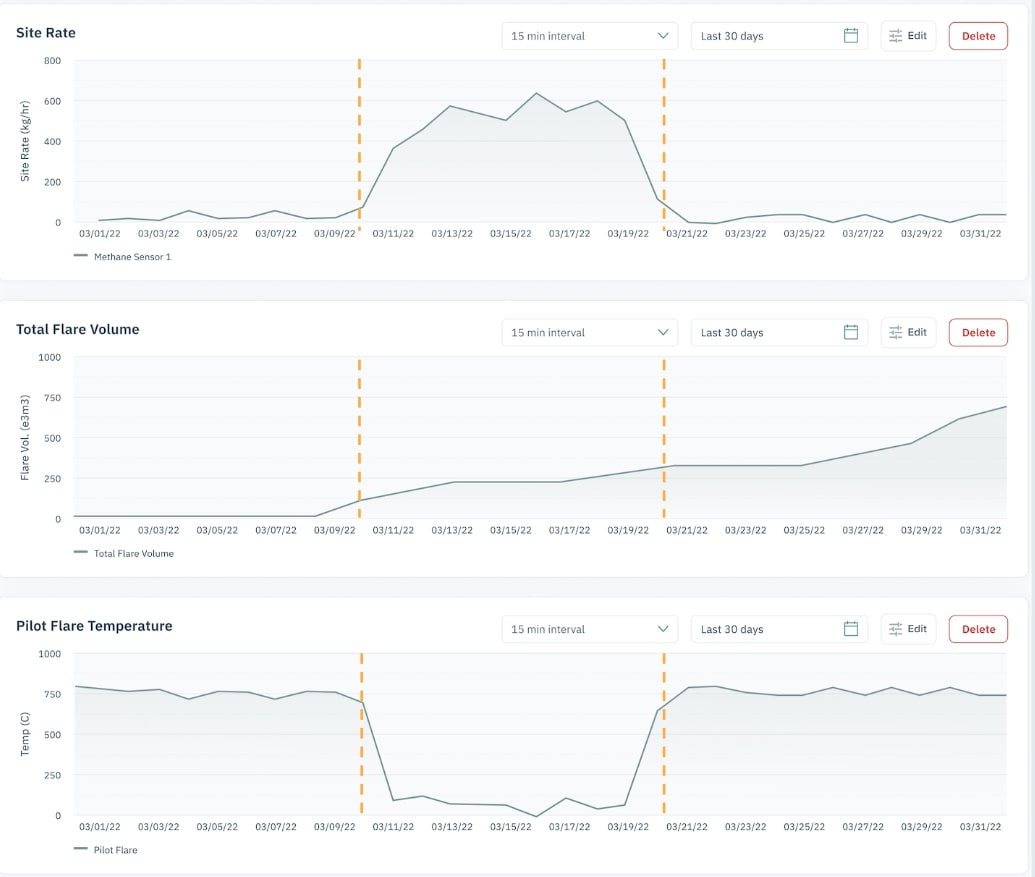
Kayla Ball (left), chief commercial officer at Validere, sits with Hart Energy’s Jordan Blum during a session on carbon the first day of DUG Appalachia 2023. (Source: Hart Energy)
Emissions management is half about operators in the oil and gas space systematizing a deluge of information. Data on flaring, temperatures, leaks and maintenance comes from many different directions and can be hard to track.
For a lot of operators, information is stored on what software company Validere argues as outdated platforms, such as Excel spreadsheets.
While not inherently bad, a more efficient way to manage emissions data is available, said Kayla Ball, chief commercial officer of Validere, at Hart Energy’s DUG Appalachia Conference and Exhibition on Nov. 29.
“You have quarterly information, yearly information, flyover data, satellite information, handwritten things, things entered on an iPad, things coming into the cloud. All of these data sets are going to their intended user group,” Ball told audience members. “So what you see is spreadsheets, flow calculation software, field data capture systems, sample management, quality management softwares, and then all of the different teams are looking at a different piece of the puzzle on any given day… it's a climb,” Ball said.
Though Microsoft’s Excel can be a “great workhorse—until it’s not,” a certain level of difficulty occurs when given “85 different spreadsheets with 85 different tabs each,” Ball said. Artificial intelligence (AI) and machine learning can mitigate these effects.
Validere’s Carbon Hub software can conglomerate all this information and spew it out for operators in a manageable way. The platform centralizes emissions and operational data and provides context to them, enabling users to track emissions-related events and stage scenario model reduction strategies.
Customers using Validere’s platform start with comprehensive mapping of their facility and equipment source-level emissions inventories for bottom-up forecasting. Customers can then supplement this data with additional information collected during field inspections, LDAR programs or other point-in-time measurement campaigns. They then use the emissions data gathered to model scenarios and forecast emissions to develop reduction programs.

Integrating operational data, continuously monitoring data and estimated and measured emissions allows for high-grade detections, efficient responses and prediction of emissions events. This real-time view of operation and emissions data allows customers to more accurately monitor the progress of their emission reduction programs.
But even with the various and proven benefits of AI in the world of emissions management, there is still a reluctance by the industry to fully lean into the world of machine learning as questions on cost and security pop up. Many in the industry continue to rely on traditional tools like Microsoft Excel in an ‘if it ain’t broke, don’t fix it’ approach.
To fit the criteria of ‘certified gas’, many operators would use new and advanced approaches to emissions management data. Once achieved, they would revert to using Excel and other simplistic data management systems.
“People deployed a lot of these additional measurements so that they could certify their gas and get a premium on their gas. And now people are almost retrenching in terms of device deployment to a more practical standard of what is going to work,” Ball said.
However, Ball doesn’t see these issues as problems that will last, as the need for advancement within the industry is constant.
“I still think there's a lot of growth for the additional measurement and the supply costs are already coming down on these devices,” Ball said.
Recommended Reading
Balticconnector Gas Pipeline Back in Operation After Damage
2024-04-22 - The Balticconnector subsea gas link between Estonia and Finland was severely damaged in October, hurting energy security and raising alarm bells in the wider region.
Venture Global Acquires Nine LNG-powered Vessels
2024-03-18 - Venture Global plans to deliver the vessels, which are currently under construction in South Korea, starting later this year.
US Coast Guard Gives All Clear After Louisiana Spill Response
2024-04-08 - A line integrity test confirms that all points are leak-free.
Apollo Buys Out New Fortress Energy’s 20% Stake in LNG Firm Energos
2024-02-15 - New Fortress Energy will sell its 20% stake in Energos Infrastructure, created by the company and Apollo, but maintain charters with LNG vessels.
Balticconnector Gas Pipeline Will be in Commercial Use Again April 22, Gasgrid Says
2024-04-17 - The Balticconnector subsea gas link between Estonia and Finland was damaged in October along with three telecoms cables.



